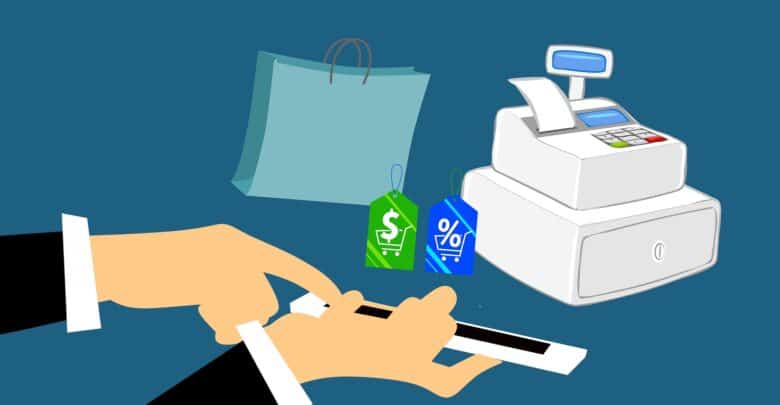Blockchain Transaction Fees: All You Need To Know

If you have ever undergone a crypto transaction in the past then you already know the small cuts that are made in terms of transactional fees over the potential sum of crypto that you have transacted. There is a potential number and percentage to which the transaction fee is deducted; it depends upon the amount of crypto being transacted and a few other factors that will be shortly made available. The purpose of transaction fees is twofold; first of all, it helps to keep the integrity of the blockchain network intact.
Transaction fees are a potential way to pay the miners or validators who are working around the clock to stabilize the network by validating the transactions that are taking place and submitting these into blocks over the blockchain network. This validation of transactions helps the network to recover from spam attacks and build a Fort house that keeps these types of attacks and attackers at bay. Another factor on which the limit of these transaction fees depends is the network activity.
If the network is bombarded with transactions and you want yours to go smoothly, then you have to pay a consistently large transaction fee to get through; otherwise, your transaction would remain in limbo and awaiting its turn so that the validators can take it up and process it properly. A potential way of making sure that the blockchain or crypto token that you are interacting with is safe is by speculating the transaction fees. If these are a little too low, then it might bring some security concerns, and if it is just too much, then the transaction that you are going to conduct won’t be worth it, that is why a mediocre range of transaction fees help in dissecting the blockchain or crypto that you should opt for. Because it is in the middle, that means the network is secure, and you won’t get burned too much moving your cryptocurrencies around.
How do Blockchain Transaction Fees Work?
Since the dawn of blockchain technology and decentralization, transaction fees have been intact and present to ensure the smooth sailing of the whole network. If you have not noticed, then here goes; blockchain technology is completely decentralized, which means that no one state, country or entity has any say in what policies are drawn and what changes take effect. It is completely in the hands of the people and for the people.
That is why in order to make sure that everyone understands the duties and stick by them, some kind of incentive needed to be created, and that is where the concept of transaction fees came into being. Whenever you send, deposit or even withdraw your crypto, you are going to incur a potential transaction fee that goes to facilitate the smooth working of the blockchain technology. People who are validating the transactions around the clock are given a part of the transaction fees incurred on whatever transaction that you have just made, which makes the possibility of a spam attack really redundant.
As explained earlier, transaction fees are extremely well within the range of people carrying out these transactions, but with the passage of time, this could get pretty expensive especially when there is just too much traffic on the network. If you want your transaction to be completed with priority, then you have to pay a heavy transaction fee to get ahead in the line or the waiting queue so that your transaction is being facilitated fast and you get the confirmation shortly.
It means that as long as people are validating the transactions, spam transactions and attacks are less likely to happen; it also makes the possibility of these attacks an extremely costly and tedious endeavour, so people must not think about it in pursuit of bringing a crypto network down. Transaction fees are awarded to every part and entity of the blockchain network may it be the validators who are in charge of validating the transactions, the maintenance group which implements and develops certain updates from time to time, and the crude testing crew, which makes sure that no hacking attempt is underway to derail the network and its activity.
Transaction Fees and Bitcoin Network
First of all, it was Bitcoin that got launched and brought us the concept of decentralization and blockchain technology; it also set the stage for transaction fees and many other standards that are being implemented and orchestrated by various other cryptocurrencies out there. The developer of Bitcoin realized from the very early stages of crypto development that miners or validators would be required to make sure that the transactions are validated in real-time and to protect the network from large-scale spam attacks. That is why the concept of transaction fees was brought further.
Whenever a Bitcoin miner confirms a transaction and validates it, the person is going to receive some kind of incentive in terms of the transaction fee along with the crypto that is awarded to them for their undying fidelity to the Bitcoin network and making sure that everything is right on point. There is a specific term in place for all the transactions that are pending in terms of blockchain technology, and that is known as the memory pool. It goes without saying that these miners or validators are going to prioritize the transactions that have a higher fee tag so that they could potentially increase the possibility of getting a bigger reward when they validate these transactions.
Therefore even if there is a possibility of a malicious attack, then these people would just have to go with over the board transaction fees, or the miners would likely be ignoring their request that is why for someone to carry out a hacking attempt against the Bitcoin network they would have to really create the space and incentivize the miners or otherwise their requests are going to get ignored straight away. Transaction fees, therefore, act as a great spam filter to make sure only the transactions that are genuine and those that come from organic sources are being facilitated, and every other thing can just be neglected.
How to Calculate Bitcoin Transaction Fees
The whole system is customized to its extreme extent, which means that when you initiate the transaction of certain Bitcoin tokens from one wallet to another, you can set the transaction fee for yourself. This manual setting of transaction fees allows you to set as much as you want and as low as you want. But you must know that the higher the fee, the more likely it is for your transaction to get through and validated and the lesser the fee, the more the chances that miners will eventually ignore your transaction.
With that being said, you can send Bitcoin tokens with absolutely no fee but know that miners are going to ignore such transactions, which means that it will remain in limbo for the foreseeable future. There is general acceptability among the public that the higher the amount of Bitcoin being transacted, the higher the transaction fee, but that is not actually the case. The transaction fee that is going to be incurred on your Bitcoin transaction depends not on the amount that is being sent but over to the transaction size that is calculated in bytes.
The higher the bytes of your transaction, the more transaction fee would be incurred to your transaction. Another factor that has been discussed in great detail earlier in the present traffic that the network is experiencing. If there is a potential demand for Bitcoin tokens within the market, then obviously, a transaction fee is going to be higher because you would need to get your transaction validated as soon as it could be so that it could be manifested into a particular block over the blockchain technology. Another situation that develops here and concern that arises is the possibility of using Bitcoin in day-to-day transactions is also going to be suppressed. Suppose you have to buy a cup of coffee or a piece of cake, and you want to pay for it in Bitcoin tokens; just how much longer you would have to wait for the transaction to get validated?
Obviously, you would need to incur a more intense transaction fee for your Bitcoin tokens to get validated and for them to land into the crypto wallet of the vendor from which you have purchased the product. This makes using Bitcoin in day-to-day life extremely complicated and a bit of a tedious task because if the transaction fee is going to be that much, it completely overthrows the purpose of using crypto for making such payments. The block, on the other hand, in which the transactions are subjected once these are properly validated, has a limit of 1 megabyte.
Miners try their best to be firm and on point with the subjection of conforming transactions into the dedicated blocks, but there is a limit to the overall speed that they can achieve. The crypto network for Bitcoin at the moment is not at its extreme scalability, which means that there are some hindrances that need to be overthrown for the system to be scaled to its absolute value. The developers are aware of this problem, and they are working around the clock to address this issue as soon as possible.
ETH Transaction Fees
There is a huge difference in how transaction fees take effect when it comes to Ether rather than Bitcoin. The working principle to determine the transaction fee for ether can be done by taking into account the overall density of computing power required for the processing of a transaction, and it is termed as gas. For the sake of ease and convenience, gas can be converted and measured into Ether which is the native broken of the entire blockchain. Now you must focus and really try to understand what is being shared with you because if you don’t then, you are not going to comprehend the meaning of blockchain transaction fees and how these are different for different cryptocurrencies in question.
When it comes to ether, the overall number of gas tokens required to carry out a transaction might remain the same, but the price of the gas token might rise or fall. In terms of Bitcoin, the transaction fee in itself changes but in terms of Ether, the number of gas tokens for a wide range of transactions might remain the same, but its price might be changing over time. The price of the gas is directly proportional to the current traffic that the network is experiencing.
If the traffic is higher, then ultimately, the price of gas is also going to increase, which means that you would require more gas tokens to validate a transaction. If you are down to pay a higher gas fee, then it means that miners would take on your transaction more keenly, and it will get validated before any other transaction could. This is a classic way of getting your transactions validated and embossed into the blocks for the ether blockchain.
When it comes to calculating the transaction fee for ether, you must understand that this gas fee is merely a price that is going to cover the cost of the transaction, plus it is going to incentivize the miners or validators in question so they could take up your transaction on a priority basis and validate it. There is also a proper gas limit in effect which determines the maximum price that can be paid for a specific transaction to get completed. The cost of the gas can be understood as the total amount of work that is required to validate a transaction, and the price of the gas is the price that the user is going to pay to cover for every hour of the work done. The overall relationship between the gas cost and gas price, along with the gas limit, practically defines the current fee for an ether transaction or for completing a smart contract in question.
Ether is going to shift its working algorithm to proof of stake in the near future, experiencing an update that is currently in the works. When this algorithm is up and running, the gas fees will practically decrease and also the overall amount of gas that could be required to validate a transaction will also be lowered because the network with then only requires so much computational power to get around the validation of transactions. This update is also going to help Ether streamline its activity and infrastructure as there would be fewer and fewer transactions that are pending, and most of them could be transacted around the clock and subjected to definitive blocks in a potentially consistent manner.
With all of this being said and done, the network traffic is something that still should be taken into account because it can still affect transaction fees as the validators are still going to prioritize transactions that have a higher transaction fee allocated to them other than those that come at a decreased or even minimal transaction fee.
The transaction fee limits and formulas differ for various cryptocurrencies as you would come into it when dealing with those specific tokens. These are an integral part of the crypto-economics that run the crypto industry, and without transaction fees, there would be absolute chaos and destabilization, which is something no one would want to share. First of all, it helps to ensure that no spam attack could be dropped regarding a particular cryptocurrency or a blockchain network, and second of all, it helps in providing the validators and people who are in charge of processing the transactions with a specific type of incentive that they can’t say no to.
Conclusion
At the end of the day, transaction fees are definitely a pain for the user, but it helps to effectively run the blockchain technology and the very essence of cryptocurrencies that we so eagerly enjoy today. The amount of traffic, however that a blockchain network is experiencing at any moment is going to affect the price of the transaction fee, and that is something that the user must take into account when performing a transaction. Usually, a preferred time would be to do so in off-hours when there is no particular activity taking place on the blockchain, and you can put a reasonable price on your transaction fee, and it would likely be taken up by validator or miner because they wouldn’t have any other work to go with in the first place.
There are networks out there that are much more scalable than their counterparts, and their transaction throughput is also something that is truly amazing, but that comes at a cost, and the cost is a derailed security system and not much regard given to decentralization. To make sure that transaction fees and other likeable inputs are better orchestrated in the near future, the research is going on, and many developers of different blockchain environments are working tirelessly to ensure that in the future, their definitive blockchain systems could be scaled to their absolute limits. This will ensure a better-decentralized nature of their blockchain systems but at the same time ensure scalability like never before.
Tokenhell produces content exposure for over 5,000 crypto companies and you can be one of them too! Contact at info@tokenhell.com if you have any questions. Cryptocurrencies are highly volatile, conduct your own research before making any investment decisions. Some of the posts on this website are guest posts or paid posts that are not written by Tokenhell authors (namely Crypto Cable , Sponsored Articles and Press Release content) and the views expressed in these types of posts do not reflect the views of this website. Tokenhell is not responsible for the content, accuracy, quality, advertising, products or any other content or banners (ad space) posted on the site. Read full terms and conditions / disclaimer.





